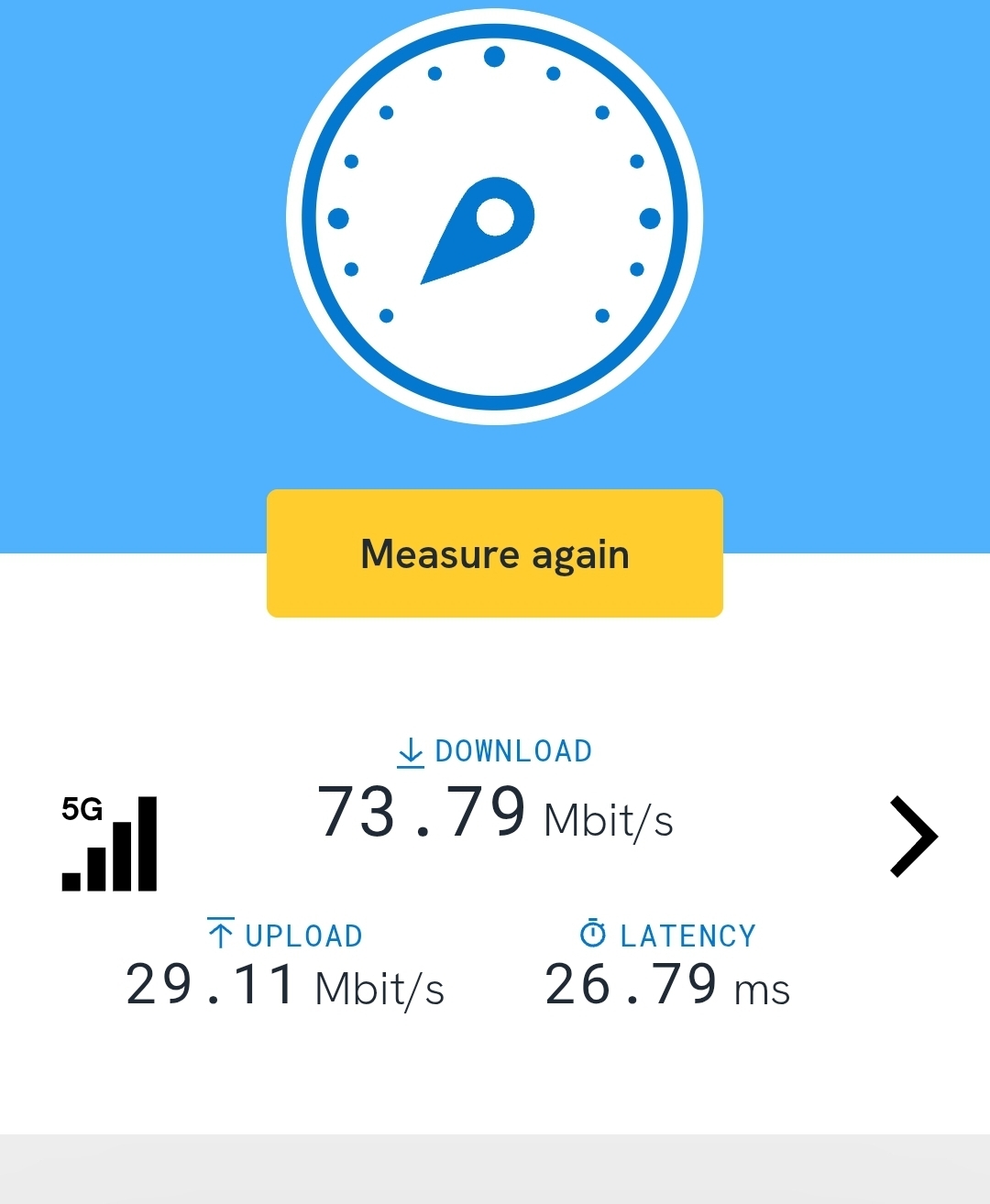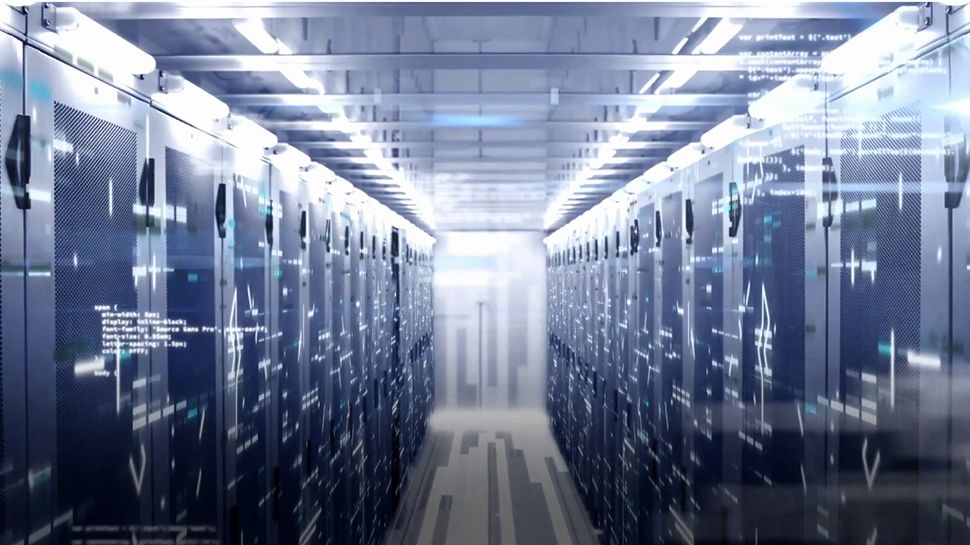China is quietly pushing ahead with massive 50,000Mbps broadband rollout to leapfrog rest of the world on internet speeds
-
I’m not sure if you’re trolling or just IT illiterate, but do you hit 100% of your plans speed 24/7?
Because most people do not, that’s not how it works.
I sure do. Usually even 10% more. Everyone I know tend to get the same results.. Only place i dont hit advertised speed is on mobile, but thats usually plenty enough even in the woods.
In my country, if you dont hit your plan besides when on mobile, something is wrong.

-
cross-posted from: https://lemm.ee/post/54702508
But it's not like the Chinese government to provide that kind of service out of kindness.
-
I have symmetrical 10 Gbps at home ($30/mo) and I'll agree. When it's nice when you have big updates, for most households 1 Gbps is going to be just fine. As you say, the vast majority of users are bottlenecked by Wi-Fi.
The bigger crime are all the asymmetrical connections that people on technologies like Cable TV networks have, where you get 1-2 Gbps down but only something tiny like 50 Mbps up. This results in crappy video calls, makes off-site/remote backups unfeasible, etc etc.
Do you actually have 10G switches and network cards, or is everything behind your router on 1G?
-
Written in Switzerland from my 25GBps symmetric connection (for like 60$/month) that I have for a couple of years

 ️
️Also for personal use the difference between 1Gbps and 25 (or, I guess, 100GBps) is essentially zero… your everyday connection is via WiFi (good luck to get more than 1GBps there) or on a home server/NAS/workstation where likely you run batch jobs where the difference between 1 minute or 5 minutes is not a huge deal (and yes I am not saying 1 vs 25 because at that speed generally the bottleneck is the place where you are getting data from)
I have a 40Mbps down, 5Mbps up connection for $30. Consider yourself as real lucky.
-
I have symmetrical 10 Gbps at home ($30/mo) and I'll agree. When it's nice when you have big updates, for most households 1 Gbps is going to be just fine. As you say, the vast majority of users are bottlenecked by Wi-Fi.
The bigger crime are all the asymmetrical connections that people on technologies like Cable TV networks have, where you get 1-2 Gbps down but only something tiny like 50 Mbps up. This results in crappy video calls, makes off-site/remote backups unfeasible, etc etc.
you get 1-2 Gbps down but only something tiny like 50 Mbps up
That's exactly what you get in Australia, even if you have FTTP, 95% of ISPs only offer up to 1000/50Mbps, and that's if you live in the big cities. Mine costs ~US$70/mo btw. And they have a 'typical evening speed' that drops to 860/42Mbps (I've never heard of such a concept outside Australia. Yeah, totally not a scam).
A handful ISPs offer 1000/400Mbps and you'll be looking at ~US$125/mo. Anything faster you'll be handed with astronomical commercial bills.
-
cross-posted from: https://lemm.ee/post/54702508
Why do I care? Why it need to be so fast?
-
Written in Switzerland from my 25GBps symmetric connection (for like 60$/month) that I have for a couple of years

 ️
️Also for personal use the difference between 1Gbps and 25 (or, I guess, 100GBps) is essentially zero… your everyday connection is via WiFi (good luck to get more than 1GBps there) or on a home server/NAS/workstation where likely you run batch jobs where the difference between 1 minute or 5 minutes is not a huge deal (and yes I am not saying 1 vs 25 because at that speed generally the bottleneck is the place where you are getting data from)
I'm sure I have the same ISP as you, but so far I didn't splurge to buy 10G or 25G gear.
If you don't mind telling, what router and switches did you go for?
Or did you go the Michael Stapelberg route?
-
Why do I care? Why it need to be so fast?
360 VR experience with 16K resolution, highly textured touchable surfaces, and smell-o-vision. Only a $40 Meta subscription with ads.
-
Written in Switzerland from my 25GBps symmetric connection (for like 60$/month) that I have for a couple of years

 ️
️Also for personal use the difference between 1Gbps and 25 (or, I guess, 100GBps) is essentially zero… your everyday connection is via WiFi (good luck to get more than 1GBps there) or on a home server/NAS/workstation where likely you run batch jobs where the difference between 1 minute or 5 minutes is not a huge deal (and yes I am not saying 1 vs 25 because at that speed generally the bottleneck is the place where you are getting data from)
Interesting--when I made a similar argument on Reddit some years ago, networking geniuses assured me that they needed more than 1Gbps to play lag-free games. This on /r/programming, no less.
-
This is for PON technology. 1 fibre can be split 32-ways to feed, you guessed it, 32 customers. 50g over a fibre that is split 32-ways with a minimum of 15db loss is impressive.
I guarantee those 100gbps circuits are a single fibre all the way from the provider to the customer. And they are expensive, very expensive.
I wonder if they use semiconductor optical amplifiers in the receivers, or if they can make do with avalanche photodiodes.
The 100G stuff I'm looking at has 18.5 dB budget with APDs, that seems rough considering you want a few kilometers of fiber, a few splices and a few connectors (probably LC/APC) as well.
-
Do you actually have 10G switches and network cards, or is everything behind your router on 1G?
Not OP, but I have my NAS and my office PC on 10Gbps SFP+ fiber, but that's so I can have fast speeds to my NAS. Spinning platters are now the limiting factor on throughput, and it'll be a while before SSDs come down in price enough for the kind of data hoarding volume I have. Roughly needs to be cut in half two more times, which is maybe closer than we all think.
2.5Gbps switches are generally good enough for home use while using plain copper wires, but I use a lot of old enterprise hardware on my network. Enterprise hardware never heard of 2.5Gbps ethernet.
Also, I found out my Unifi Edgerouter X maxed out at 500Mbps unless I shut off a lot of features. Upgraded to an OPNsense box. There's probably a lot of home user routers that are similarly limited.
-
Why do I care? Why it need to be so fast?
Decades ago....
"Why do I need electricity? I have candles. Lights seem excessive."
Yes, but once most people have electricity, new products will be designed to take advantage of it. Now you can have a washing machine, for example.
Broadband is the same. Once most of your population has high bandwidth, we can start to design things that will use it. Right now we're still designing for DSL speeds.
-
I have a 40Mbps down, 5Mbps up connection for $30. Consider yourself as real lucky.
lol I have 3Mbps down .5 up for 40$
-
360 VR experience with 16K resolution, highly textured touchable surfaces, and smell-o-vision. Only a $40 Meta subscription with ads.
Latency is much more critical than bandwidth for any sort of real-time VR.
-
But it's not like the Chinese government to provide that kind of service out of kindness.
Big Brother needs bandwidth to watch you in 4K.
-
I have a 40Mbps down, 5Mbps up connection for $30. Consider yourself as real lucky.
Yeah, I was on that until the other week, when my area finally got upgraded to 1Gbps.
It's nice for big downloads (and with game sizes what they are now, that bit is a big difference), but for regular use? Not really a vast change. It's nice that your bandwidth doesn't suddenly vanish when one of your unattended devices decides to wake up and download a 20GB update for a game you haven't played in months I guess.
-
Meanwhile, Telia in Estonia: "The Estonian customer doesn't prioritize connection speed or price, that's why we don't need to offer competitive speed/price ratios compared to what we have in other European countries"
Seems surprising, especially because Estonia is known for its digitized government. I logically thought that it'd be complemented with decent Internet coverage.
-
Probably not where I am, that seems really low. I mean it depends if you use name brand or not. Often I don't use the name brand ones

I just checked on eBay, and there are multiple listings for single port 100 GbE Mellanox (now nVidia) Connect-X 4 cards in the $60-100 range.
-
cross-posted from: https://lemm.ee/post/54702508
There's a bunch of places in the US that has 10 Gbps speed, so this jump to 50 Gbps is not too shocking. Writing it as 50,000 Mbps to make it seem huge is an interesting take.
-
Seems surprising, especially because Estonia is known for its digitized government. I logically thought that it'd be complemented with decent Internet coverage.
We have roughly the same problem that the US has, where they've paid the big ISPs to put fiber everywhere and all that money got pocketed. Well, Estonia's first few big fiber projects were all through Telia. Telia put down way less fiber than promised and constantly kept saying the lines were already all committed so they couldn't rent it out to competitors.
This I believe started before we even had Telia here - We had Eesti Telekom, later known as Elion, and then finally it was acquired by Telia. The same company has had a semi-monopolistic status pretty much all the time. Tele2 and Elisa exist, but they've never had the sweet ass contracts Telia's always had.
This is slowly starting to change with the currently ongoing broadband project where you can get an ISP-neutral fiber connection installed for like 99€ or 199€, regardless of how much work it is to get the lines to you, but I'm not sure this is even available if you've already got Telia's monopoly fiber installed. It's very slow to roll out and every year or 2 they choose a bunch of municipalities with problematic Internet access and then if you live in one of those, you can apply. This has been a godsend, because it got me fiber at home, after years of only being able to get 12/1 mbps through Telia copper.



